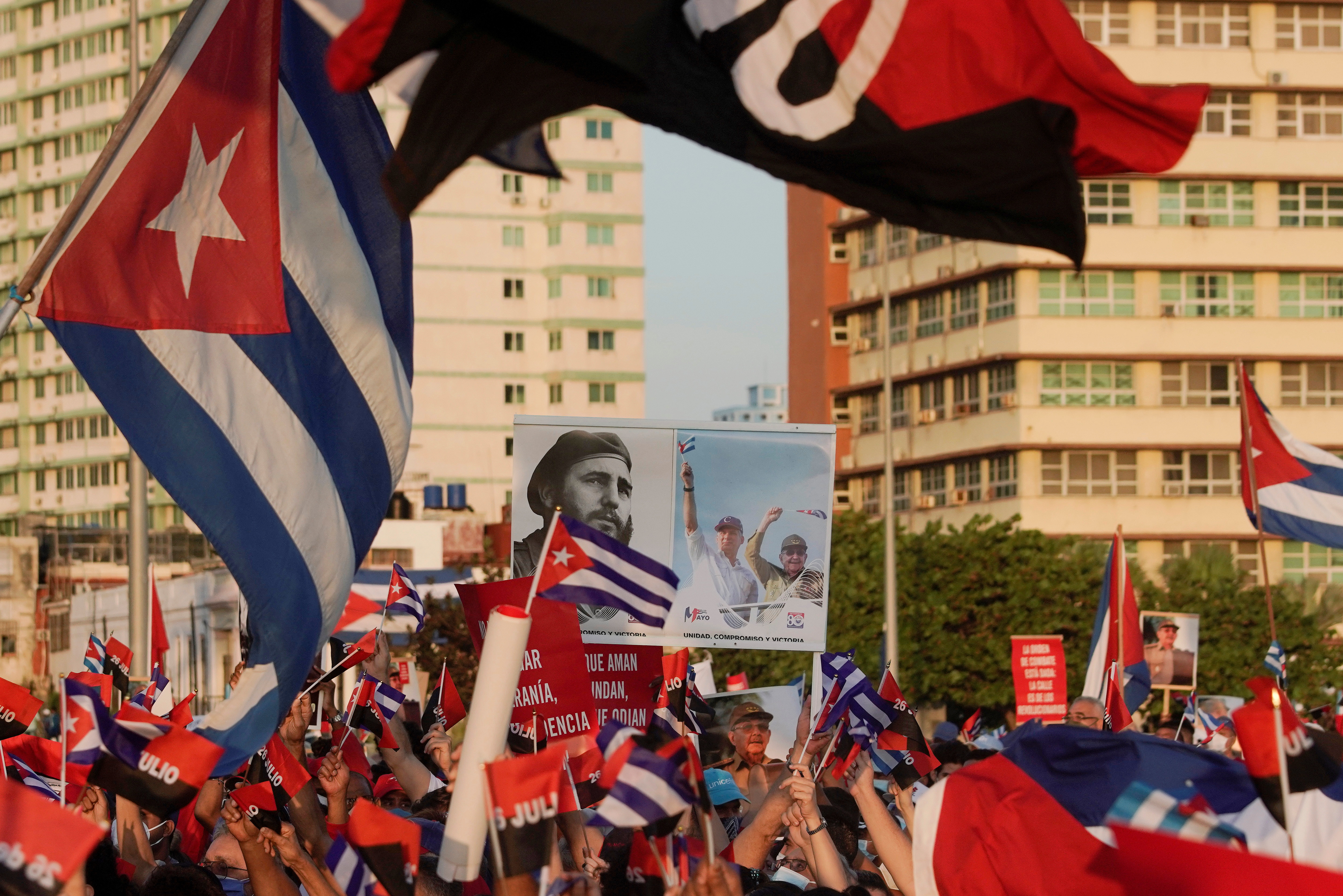By TK Hernandez
Few mainstream media journalists reported the US blockade against Cuba was the direct driver of the country-wide blackouts which began on October 18 and lasted for several days.
In other words, not accurately reporting the main cause of the island’s blackout, is a perfect example of the media bias against Cuba.
The US embargo against Cuba is “the pink elephant in the room.” It’s the one thing looming large and destructive for the last 62 years. It should be the starting point for any discussion on Cuba when analyzing the economy, or even telling a story.
How many readers of mainstream media content realize that six decades of sanctions block the island’s access to fuel, food, medicines, medical supplies, normal trade and international banking? This has had dire consequences for the economy.
One must ask how any analyst or journalist with any integrity can avoid the pink elephant in the room when writing on Cuba. And yet, many of the “specialists” continue to do so, blaming Cuba and its government for the present situation.
However, it’s not that journalists never report on “blockades.” Indeed they do. The word was used repeatedly in the press when Canada’s borders were blocked during the Canadian truckers convey protest in 2022. In the case of Canada, we had “on time” delivery of the news and information. We immediately knew its costs and consequences.
In 2022, while the world was recovering from the economic catastrophe of the COVID pandemic, truckers from across Canada gathered to protest the restrictions affecting their work. The protests became known as the “freedom convoy protest.” They gathered in Ottawa, blocked the Ambassador Bridge, an important US-Canada trade link, and other border crossings.
The immediate result was the crashing of supply chains, increased policing, safety and city cleanup costs, loss of business income, and employees’ wages. Interesting also was the fact that the government invoked the Emergency Measures Act, blocked fundraising money and froze participants’ bank accounts.
Journalists widely reported the event and did not hesitate to call it a “blockade.” If you’ve noted any similarities between the blockade of Cuba and the Canada-US blockade, you would be correct. The consequences of both blockades were and are presently, the same. Only the dollar amounts differ. Blocked supply chains and trade, loss of business, loss of wages and banking access are common impacts.
A blockade ‘blocks’ trade between nations. And this is exactly the Cuban experience of US sanctions. But it has not been a three-week experience for the Cubans. For some of those people, it is an entire generation of hardship.
The media, without hesitation, profusely reported on the Canada-US blockade. At the time of the truckers’ protest, global economies were recovering from the effects of world-wide shutdowns. Yet in the case of Cuba, the country is still in recovery mode. Economic resuscitation is intensely
difficult under the long-term effects of the sanctions. Those sanctions were increased incessantly by the Trump regime and worsened by Biden’s forgetfulness of his campaign promises and further measures against the island.
The Economic Cost of Blockades
Journalists did not hesitate to report the costs and consequences of the Canada-US blockade. In contrast, it is more difficult to find information on the costs of the US blockade against Cuba.
The United Nations and Cuba both report that US sanctions have cost $160 billion over the last six decades. On a daily basis, the blockade costs the Cuban economy an estimated $13,800,000 US dollars. Important to note here, we are comparing a developed economy with a developing economy.
During Canada’s brief blockade, the Minister of Finance Chrystia Freeland told CNN the truckers’ protest had impacted the Canadian economy by approximately $390 million a day. She called the costs “real” and the blockades of the border crossings “… illegal blockades and illegal activity (which is) damaging the Canadian economy.” Likewise, the US blockade of Cuba is also illegal, but how many people actually know this? It is barely mentioned in the corporate media.
According to IHS Markit, a research firm, the Canada-US auto industry faced losses as high as $988 million worth of cars and auto parts moving between the two countries.
Peter Nagle, an auto industry analyst from IHS Markit, told the New York Times, “It’s not like you can flip a switch and get back to where we were production-wise.” Likewise, neither can Cuba ‘flip the switch’ whilst hammered by six decades of a blockade.
Bloomberg predicted the blocking of trade routes between the US and Canada to cost the Canadian economy as much as “$500 million daily and “put the recovery in reverse.”
Bloomberg also reported that the Canada-US blockade affected the delivery of goods and agricultural products, exacerbating supply chain issues and causing prices increases not seen in decades.
Even Canada’s governor of the Bank of Canada, Tiff Macklem, told a press conference, “a prolonged blockage of key trade routes would impact the economy. We’ve already got a strained global supply chain. We don’t need this.”
Another respected economist, David Rosenberg, said the Canada-US blockade would, “cut both ways since it will mean more acute shortages and bottlenecks and that is going to be problematic for inflation.”
According to Reuters, the Canada-US blockade “snarled” an estimated “$2.86 billion US worth of goods.” Imagine the value of goods to and from Cuba “snarled” over the last six decades. The three-week Canada-US blockade cost tens of millions of dollars in lost business income. Imagine how much 62 years of sanctions have cost the island’s economy.
According to government estimates at the time, the closure of the Ambassador Bridge between Canada and the US delayed approximately $2.34 billion in trade. Other closures at border crossings in Manitoba and Alberta halted an additional $1.3 billion.
Canada’s Retail Council reported that shopping centers shut down during the protests with estimated losses of $70 million. Stores and restaurants laid-off employees. This could logically explain the stores and restaurants closures in Havana. It is a fact that a continuous supply of goods and food is necessary to support those jobs.
There are also human costs to a blockade in that workers and their families experience wage losses and its trickle-down effects. These are the hidden costs of a blockade. Sanctions hurt and affect human lives. In Canada, employees lost their jobs because of layoffs. The same can be said of Cuba. To believe an American president when they say they support the Cuban people, is to accept a bold-faced lie.
One can logically conclude that blockades penalize an economy and its people. Although the truckers’ protest lasted only several weeks, the total resulted in billions of dollars in losses for both the Canadian and US economies.
Imagine then, what a blockade of 62 years has cost the Cuban economy? Is it any surprise that Cuba’s electrical system broke down from the lack of fuel and spare parts?
Question why the corporate media freely reported on the Canada-US blockade. Question further, why the media fails to report the full story on Cuba. Is it the pink elephant in the room, the obvious thing that no one wants to acknowledge? Draw your own conclusions based on “facts and knowledge,” not propaganda or incomplete reporting. Blockades, whether in Canada or Cuba, cost an economy.
Originally publiushed in Amistad.


Leave a Reply